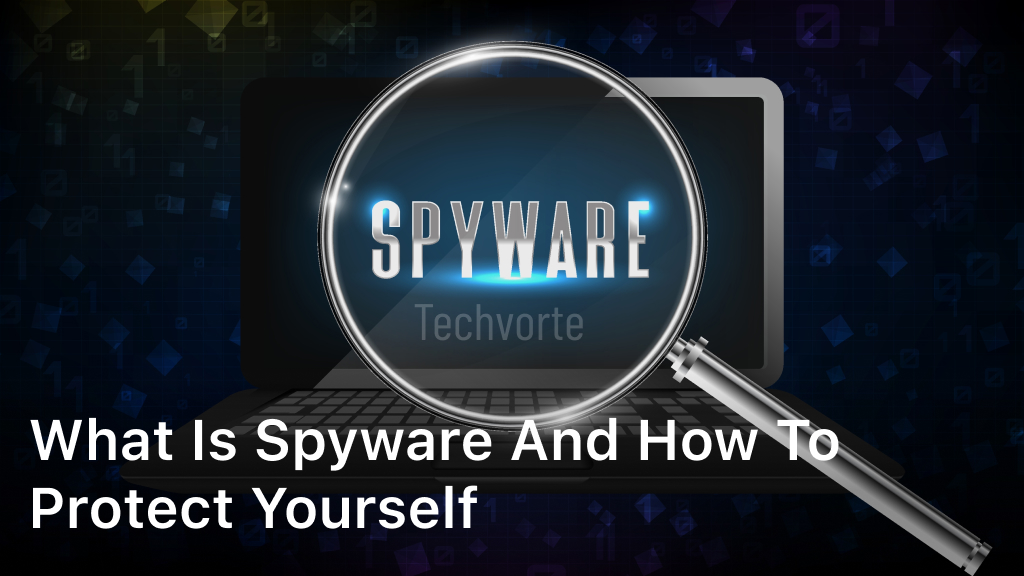Spyware is a malicious software that infiltrates devices and records personal information, online activity and sensitive data.
It’s a severe threat to digital privacy and security and without proper protection measures, spyware can cause irreparable damage.
Therefore, it’s crucial to understand what spyware is, its definition, and how to safeguard against it.
In this section, we’ll discuss the basics of spyware, such as its definition and ways to protect yourself from it.
We’ll also cover the most effective strategies for spyware removal and prevention, ensuring your digital environment remains secure and safe.
Types of Spyware
Adware
Adware is perhaps the most common form of spyware, primarily designed to display advertisements on a user’s device.
While seemingly harmless, adware can track browsing habits and preferences to deliver targeted ads.
Tracking Cookies
Tracking cookies are small pieces of data stored on a user’s device by websites to track their browsing activities.
While not inherently malicious, these cookies can be exploited by spyware to gather sensitive information without the user’s knowledge.
Keyloggers
Keyloggers are spyware programs designed to record keystrokes on a user’s device.
This can include sensitive information such as passwords, credit card numbers and personal messages, which are then transmitted to unauthorized third parties.
Trojans
Trojan spyware masquerades as legitimate software or files to deceive users into installing them.
Once installed, Trojans can perform various malicious activities, including data theft, system corruption and remote access by hackers.
How Spyware Works
Spyware employs various methods to infiltrate a user’s device, including deceptive downloads, email attachments and software vulnerabilities.
Once installed, spyware silently collects data such as browsing history, keystrokes and personal information, which is then transmitted to remote servers for exploitation.
Spyware Protection
Prevention is key when it comes to spyware. One of the most vital prevention methods is to ensure your security software is updated regularly.
This includes antivirus and antispyware software.
These programs offer real-time protection and will scan your device for malware, including spyware.
Another essential method for detecting spyware is to use a spyware scanner.
These scanners search for any spyware that may be hiding on your device.
Regularly running a scan with a reputable spyware scanner is an effective way to detect and remove spyware from your device.
Implementing strict security measures will help safeguard against spyware infections.
Make sure you are using a popup blocker and that you only download software from reputable sources.
Avoid clicking on any links from unknown sources.
These basic yet vital steps will ensure that you maintain the highest possible level of digital privacy and security.
Spyware Removal and Prevention
If you suspect that your device is infected with spyware, it’s crucial to remove it as soon as possible.
Fortunately, there are a few effective techniques for removing spyware from your devices.
- Run a reliable anti-spyware program to detect and remove any spyware.
- Manually remove any suspicious programs or files that might be related to spyware.
- Reset your device to its original factory settings.
Once you’ve removed the spyware, it’s essential to prioritize preventive measures to minimize the risk of future infections.
Here are some tips to help you:
- Install and regularly update reputable anti-spyware and antivirus programs.
- Avoid clicking on links or downloading attachments from unknown sources.
- Keep your operating system and all applications up-to-date with the latest security patches.
- Enable your firewall to enhance your device’s security.
- Use strong passwords and two-factor authentication to protect your accounts from unauthorized access.
By prioritizing spyware removal and prevention, you can maintain the ongoing security and privacy of your digital environment, keeping cybercriminals at bay.
Conclusion
Spyware poses a significant threat to privacy, security and personal data integrity.
By understanding the different types of spyware, recognizing the signs of infection and implementing preventive measures, users can effectively safeguard their devices and information from malicious attacks.
FAQ
What is spyware?
Spyware refers to malicious software that is installed on a computer or mobile device without the user’s knowledge or consent. It is designed to monitor and collect information about the user’s activities and send it back to the creator of the spyware.
How does spyware work?
Spyware can be installed through various means, such as email attachments, software downloads, or visiting infected websites. Once installed, it runs silently in the background, tracking keystrokes, capturing screenshots, recording browsing habits, and accessing personal information.
What are some examples of spyware?
Examples of spyware include keyloggers, adware, Trojan horses, and browser hijackers. Keyloggers record keystrokes, capturing sensitive information such as passwords and credit card details. Adware displays unwanted advertisements, while Trojan horses disguise themselves as legitimate software to gain access to a system.
Can spyware be removed manually?
While it’s possible to remove spyware manually, it’s often challenging and may require technical expertise. Using antivirus software is generally recommended for safe and effective removal.
How can I detect spyware on my device?
You can detect spyware on your device by: 1. Running a thorough scan with reputable antivirus and anti-malware software. 2. Monitoring your device for unusual behavior, such as slow performance, unexpected pop-ups, or changes to browser settings. 3. Checking your device’s app permissions and reviewing the list of installed applications for any suspicious or unfamiliar apps. 4. Paying attention to any unexplained data usage or sudden depletion of battery life.
How can I remove spyware from my device?
To remove spyware from your device, you can: 1. Run a full system scan with reputable antivirus and anti-malware software. 2. Use specialized spyware removal tools recommended by trustworthy security experts. 3. Uninstall any suspicious or unfamiliar applications from your device. 4. Reset your web browsers to their default settings to remove any unwanted extensions or plugins.
How can I prevent spyware infections in the future?
To prevent spyware infections, consider the following precautions: 1. Keep your operating system and software applications up to date with the latest security patches. 2. Be cautious when clicking on links or downloading attachments, especially from unknown sources. 3. Use a reputable antivirus and anti-malware software with real-time protection. 4. Enable automatic updates for your security software. 5. Regularly back up your important files and data to an external storage device or cloud-based service.





